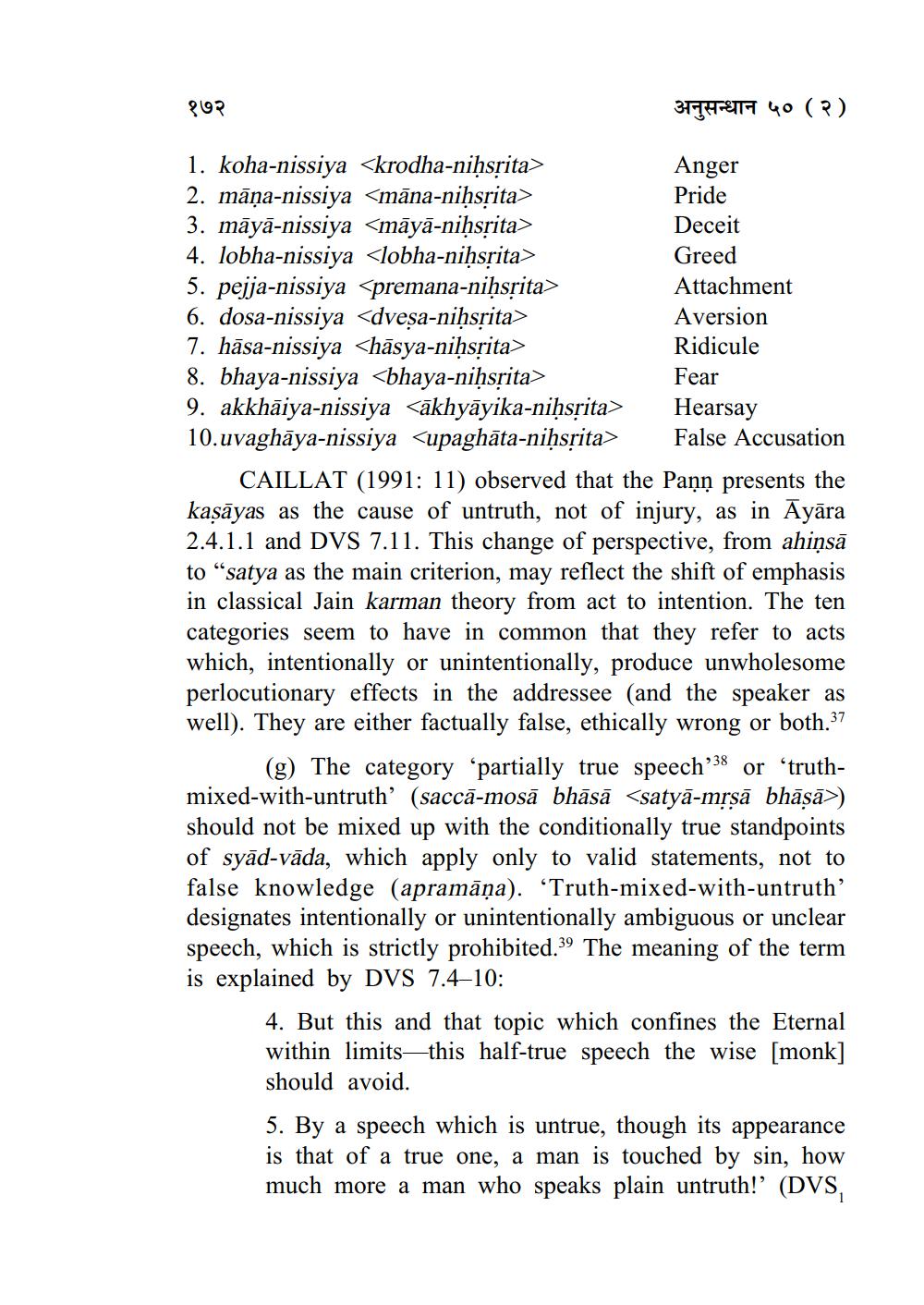________________
१७२
31LHEITA 40 (?)
Fear
1. koha-nissiya <krodha-niḥssita>
Anger 2. māņa-nissiya <māna-niḥsrita>
Pride 3. māyā-nissiya <māyā-niḥsrita>
Deceit 4. lobha-nissiya <lobha-niḥsrita>
Greed 5. pejja-nissiya <premana-niḥsrita>
Attachment 6. dosa-nissiya <dveșa-niḥssita>
Aversion 7. hāsa-nissiya <hāsya-niủspita>
Ridicule 8. bhaya-nissiya <bhaya-niḥspita> 9. akkhāiya-nissiya <ākhyāyika-niḥssita> Hearsay 10.uvaghāya-nissiya <upaghāta-niủssita> False Accusation
CAILLAT (1991: 11) observed that the Pann presents the kasāyas as the cause of untruth, not of injury, as in Āyāra 2.4.1.1 and DVS 7.11. This change of perspective, from ahiņsā to “satya as the main criterion, may reflect the shift of emphasis in classical Jain karman theory from act to intention. The ten categories seem to have in common that they refer to acts which, intentionally or unintentionally, produce unwholesome perlocutionary effects in the addressee (and the speaker as well). They are either factually false, ethically wrong or both.37
(g) The category 'partially true speech?38 or “truthmixed-with-untruth' (saccā-mosā bhāsā <satyā-mrsā bhāṣā>) should not be mixed up with the conditionally true standpoints of syād-vāda, which apply only to valid statements, not to false knowledge (apramāņa). “Truth-mixed-with-untruth' designates intentionally or unintentionally ambiguous or unclear speech, which is strictly prohibited.39 The meaning of the term is explained by DVS 7.4–10:
4. But this and that topic which confines the Eternal within limits—this half-true speech the wise [monk] should avoid.
5. By a speech which is untrue, though its appearance is that of a true one, a man is touched by sin, how much more a man who speaks plain untruth!' (DVS,




